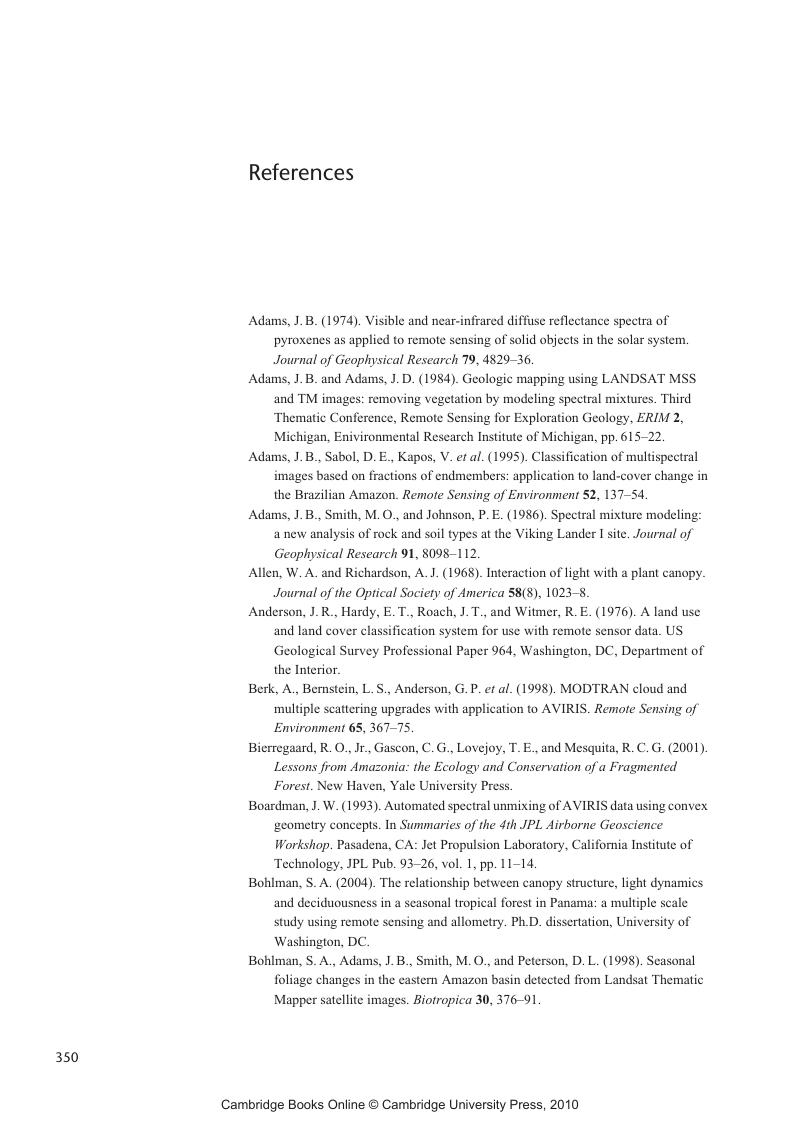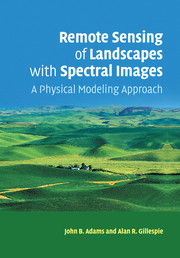Book contents
- Frontmatter
- Contents
- About the authors
- Preface
- Acknowledgments
- 1 Extracting information from spectral images
- 2 Spectroscopy of landscapes
- 3 Standard methods for analyzing spectral images
- 4 Spectral-mixture analysis
- 5 Fraction images of landscapes
- 6 Target detection
- 7 Thematic mapping of landscapes
- 8 Processes and change
- Glossary
- Reference
- Index
- References
Reference
Published online by Cambridge University Press: 23 January 2010
- Frontmatter
- Contents
- About the authors
- Preface
- Acknowledgments
- 1 Extracting information from spectral images
- 2 Spectroscopy of landscapes
- 3 Standard methods for analyzing spectral images
- 4 Spectral-mixture analysis
- 5 Fraction images of landscapes
- 6 Target detection
- 7 Thematic mapping of landscapes
- 8 Processes and change
- Glossary
- Reference
- Index
- References
Summary

- Type
- Chapter
- Information
- Remote Sensing of Landscapes with Spectral ImagesA Physical Modeling Approach, pp. 350 - 356Publisher: Cambridge University PressPrint publication year: 2006
References
- 1
- Cited by



